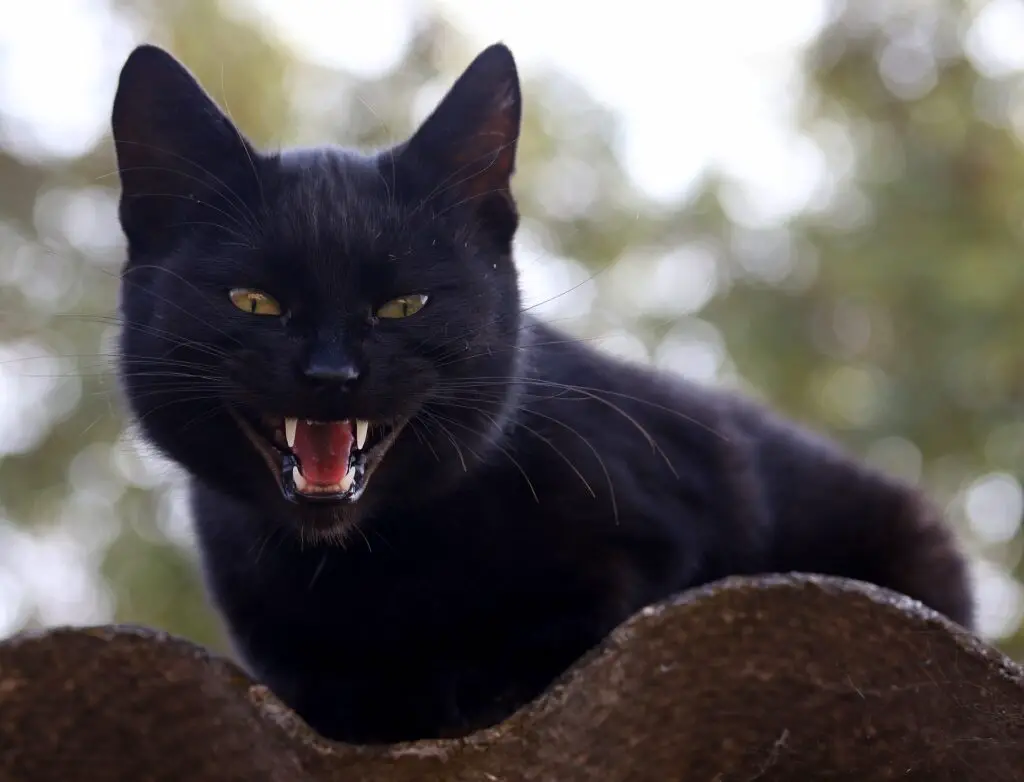
Cats are known for their sharp claws and teeth, but have you ever wondered how these features evolved to make them such efficient hunters?
From the shape of their teeth to the size of their jaw, let’s take a closer look at the evolution of cat teeth and how they became the perfect hunting tools.
First of all, it’s important to understand that cats are obligate carnivores, which means that they must consume meat to survive.
Their ancestors, the saber-toothed cats, were also obligate carnivores and had large, sharp teeth that were ideal for hunting and killing large prey.
As cats evolved, their teeth became smaller and more specialized, but they still retain the sharpness and strength needed to take down prey.
One of the most striking features of cat teeth is their sharpness.
The front teeth, or incisors, are razor-sharp and are used for biting and grasping prey.
The canines, or fangs, are longer and even sharper and are used for piercing and holding on to prey.
The back teeth, or molars, are not as sharp but are designed for crushing and grinding food.
This combination of sharp and crushing teeth allows cats to effectively tear and chew their food.
Another important aspect of cat teeth is their size and shape.
Cats have a smaller jaw compared to other large predators, but this is actually an advantage when it comes to hunting.
A smaller jaw allows for greater precision and control when biting and holding onto prey.
Additionally, the shape of cat teeth is optimized for gripping and slicing through meat. The curved shape of the canines and the sharp edges of the molars make it easy for cats to tear through flesh and crush bones.
But it’s not just the teeth themselves that make cats such skilled hunters – it’s also the way they use them.
Cats are able to open their jaws extremely wide, which allows them to take in large chunks of food at once.
They also have a unique jaw structure that enables them to move their lower jaw independently of their skull, allowing them to make precise, slicing bites.
Another important aspect of cat teeth is their dental care.
Cats’ teeth are constantly growing, and they need to wear them down through chewing and gnawing. This is why they have a natural instinct to chew on things and why they will often chew on anything they can find, including toys, bones, and even plants.
Regular dental checkups and cleaning with the vet, as well as providing a diet with appropriate size and texture of food, can help keep a cat’s teeth healthy and strong.
Now, you might be wondering, why do cats have retractable claws but not retractable teeth?
Well, claws are used for hunting, but also for defense and climbing. Retractable claws allow cats to keep them sharp and ready for action, while also protecting them from wear and tear when not in use.
Teeth, on the other hand, are used primarily for eating and are constantly in use. Retractable teeth would not have provided much of an advantage for cats in the wild.
In conclusion, the evolution of cat teeth is a fascinating subject. From the sharpness of their incisors to the shape of their molars, every aspect of a cat’s teeth is designed to make them the perfect hunting tools.
The next time you watch your feline friend chowing down on their dinner, take a moment to appreciate the intricate design of their teeth and the role they play in their survival.
And don’t forget to keep an eye on their dental health, a happy cat is a healthy cat!
Lee Harris
Latest posts by Lee Harris (see all)
- Homemade Cat Cookies: A Purr-fect Treat for Any Occasion - February 7, 2024
- Chic Feline Elegance: Crafting a Multi-Tiered Black Cat Cake - February 6, 2024
- Purr-fectly Delicious: Black Cat-Themed Donut Delight - February 5, 2024

